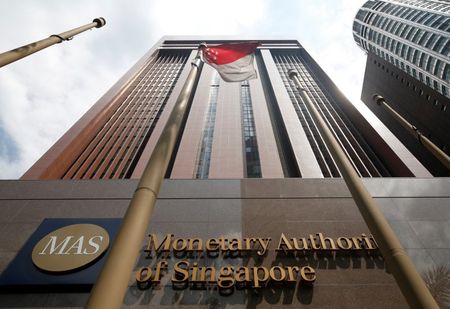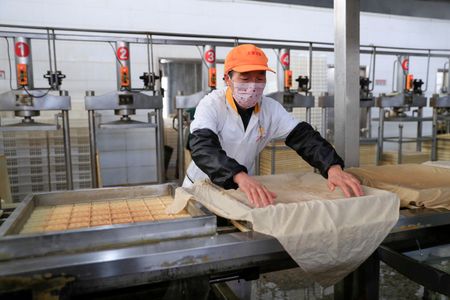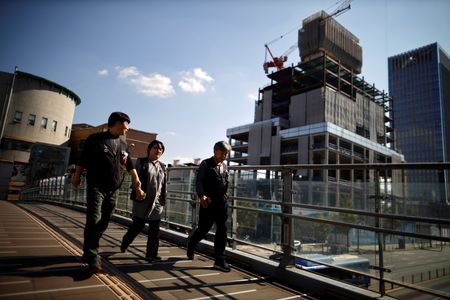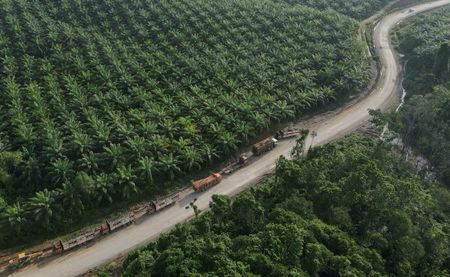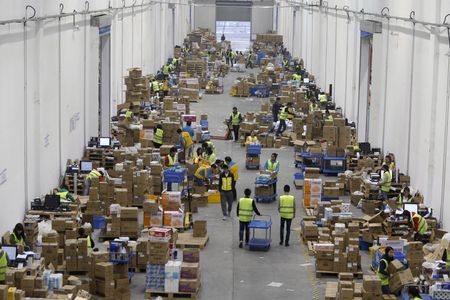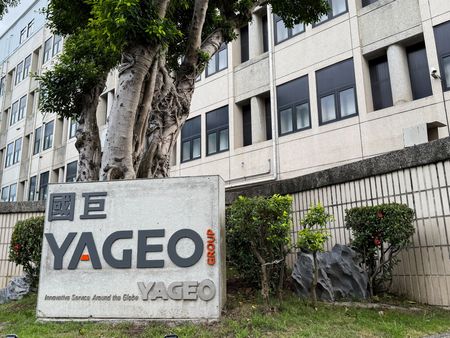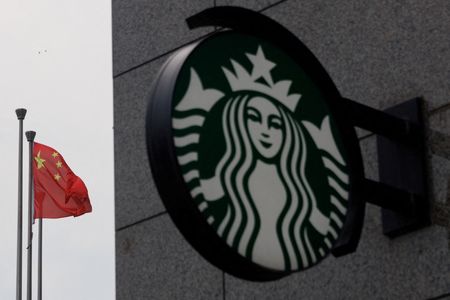By Xinghui Kok, Yantoultra Ngui and Jun Yuan Yong
SINGAPORE (Reuters) -Singapore’s central bank loosened its monetary policy for the second time this year on Monday, saying prospects for global growth and trade have dimmed amid U.S. tariffs, and the trade ministry cut its growth forecast for the city-state.
The government downgraded Singapore’s 2025 growth forecast to 0% to 2% from 1% to 3% previously, citing a significantly weaker external demand outlook after advance data showed GDP contracted a seasonally adjusted 0.8% in the first quarter.
Singapore, among the world’s most open economies, is often seen as a bellwether for global growth as its international trade dwarfs its domestic economy.
The Monetary Authority of Singapore (MAS) said it would slightly reduce the prevailing rate of appreciation of its exchange rate-based policy band known as the Nominal Effective Exchange Rate, or S$NEER.
The width and the level at which the band is centred were unchanged, it said.
The central bank said exporting countries hit by tariffs will face weaker demand and pressure to lower prices for their output, meanwhile global financial conditions have tightened as asset markets start repricing risks in the global economy.
“These factors will exert widespread and potentially reinforcing drags on production, trade and investments in Singapore’s major trading partners,” the MAS said.
“A more abrupt or persistent weakening in global trade will have significant ramifications on Singapore’s trade-related sectors, and in turn, the broader economy,” the MAS said.
Economists said they would not rule out another easing in the second half of the year if economic conditions deteriorate, given the central bank’s dovish rhetoric.
AMMUNITION IN THE POCKET
OCBC economist Selena Ling said MAS was still allowing the S$NEER to appreciate to “leave some ammunition in the pocket” and not over-react “since a lot of the external uncertainties are tariff induced and the flip-flop announcements continue, so the eventual magnitude of the hit on growth and inflation remains elusive”.
DBS economist Philip Wee said the central bank was “monitoring the significant global trade risks but has not concluded that it would result in a global recession”.
From a year earlier, the economy expanded 3.8% in the first quarter, slowing from an expansion of 5.0% in the fourth quarter and 4.4% in 2024.
Maybank economist Chua Hak Bin said further easing in the second half to a neutral bias was possible, in the event of a technical recession, but he was “penciling in a slowdown, not a recession at this stage”.
“We maintain our GDP growth forecast at 2.1%, slightly above MTI’s new range of 0%-2%,” he added.
On Monday, the central bank adjusted its core and headline inflation forecasts for 2025 to 0.5% to 1.5% from a previous 1% to 2% and 1.5 to 2.5%, respectively.
The Singapore dollar reversed earlier losses to trade higher after the policy decision.
Analysts polled by Reuters had widely expected the MAS to loosen monetary policy by reducing the slope of the band in which it allows the S$NEER to trade.
Instead of interest rates, the MAS manages monetary policy by letting the local dollar rise or fall against the currencies of its main trading partners within the S$NEER.
(Reporting by Xinghui Kok, Yantoultra Ngui and Jun Yuan Yong; Editing by John Mair and Jacqueline Wong)

